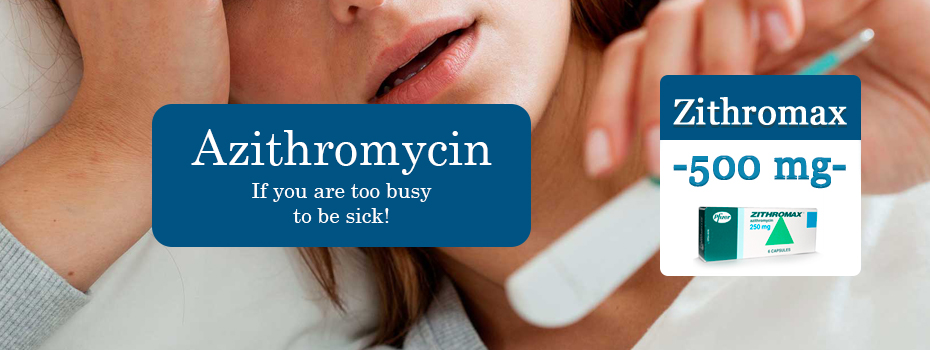Vaginal candidiasis in pregnancy
Vaginal candidiasis (thrush) is damage to the female genital tract yeast fungi of the genus Candida (Candida albicans). At the same time vaginal candidiasis is a frequent companion of pregnancy, which greatly complicates the course of the last and jeopardizes the health of both mother and child. In this article we will discuss the causes of candida, as well as the characteristics of this disease, its diagnosis and treatment of pregnant women.
What is Vaginal candidiasis? How often have vaginal candidiasis develops during pregnancy?
Vaginal candidiasis is a specific woman's genital tract infection (the vagina) caused by candida yeast-like fungi. Vaginal candidiasis occurs at least once in your life in 75% of women. The women had been ill once candidiasis risk of re-infection persists for a long time.
Candida fungus inhabits the intestine and oral mucosa of most healthy people. Approximately 10% of healthy women candidates is determined, and the vagina.
In pregnant women, the incidence of vaginal candidiasis is about 30% before delivery to 40% (which is 3-4 times more likely than non-pregnant women).
Why vaginal candidiasis usually develops during pregnancy?
Such frequent development of candidiasis during pregnancy has its reasons. First, for the occurrence of vaginal candidiasis should be a violation of the normal intestinal microflora. Such a phenomenon during pregnancy are often, mainly because of lower immune function and pregnant women due to lack of vitamins and minerals.
A role in the development of vaginal candidiasis in pregnancy and hormonal changes are specific to pregnancy. For example, high levels of progesterone (a hormone that supports the development of pregnancy) has a moderate effect immunnosupressivny, and the change of the vaginal mucosa under the action of hormones favor the emergence of infection.
What factors predispose to the development of candidiasis?
Despite significant progress in the field of medical diagnosis, treatment and prophylaxis of Candida infections in recent years reversing the incidence of this type of pathology is not observed, the incidence of vaginal candidiasis on the contrary increases slowly. This applies especially to pregnant women. What are the causes of increasing incidence of vaginal candidiasis? According to experts, the main reason for the increase incidence of this pathology (especially in pregnant women) is an adverse effect of environmental factors on a woman's body. Is reliably known that factors such as chronic stress, pollution, overwork, malnutrition adversely affect the general condition of the body. Pregnant women are much more sensitive to the action of these factors, because candidiasis is more frequent in this category.
Another reason for the increasing incidence of vaginal candidiasis is uncontrolled and inappropriate antibiotic treatment (mainly self-medication). Treatment with antibiotics is known to violate the composition of the microflora of the body, which in turn greatly increases the risk of candidiasis.
What is the risk of vaginal candidiasis during pregnancy?
Any vaginal infection (or infection at other sites) is very dangerous during pregnancy pills and childbirth. It is shown that the risk of infectious complications in pregnancy and childbirth is much higher among women who during pregnancy suffered a certain type of genital tract infection. Vaginal candidiasis is one of the most common sexually transmitted infections. The risk associated with pregnancy candidiasis is as follows:
- The risk of infection and fetal membranes during pregnancy (amnion, chorioamnionitis)
- The risk of miscarriage or premature birth
- The risk of having a baby with low birth weight
- The risk of developing uterine fetal oxygen deficiency
- Premature rupture of membranes
- The risk of wound infection after childbirth (endometritis)
How is the infection?
In most cases, the development of Candida infection is as follows: an initial stage - the penetration of fungi in the vagina, then there is the attachment of bacteria to the mucosa and vaginal epithelium of the primary lesion. At the point of attachment of microbes local inflammation occurs, which is intended to limit the spread of infection. Defenses of pregnant women are considerably weakened and often because they fail to localize the infection. In the next phase microbes penetrate into the depth of the mucosa and in submucosal layer. At this stage, as a rule, symptoms of the disease. Further spread of microbes from the bloodstream can lead to candidal lesions of the internal organs (severe candida pregnancy).
Forms of vaginal candidiasis
Often, vaginal candidiasis develops symptoms. This condition is called asymptomatic carriage of infection. It is possible periodic exacerbation of infection. True candidiasis is characterized by the appearance of symptoms (see below), and composition of intestinal microflora is considerably impaired.
The most severe form of vaginal candidiasis is a co-infection at which to candidal infections and associated bacterial infection.
Also known three clinical forms of vaginal candidiasis (a form of the disease): a) Kandidonositelstvo (corresponds to asymptomatic carriage of infection), acute genital candidiasis (corresponding to the true candidiasis and asymptomatic or exacerbation of chronic candidiasis), and chronic recurrent candidiasis (for this form of the disease is characterized by long duration and the periodic flare).
What are the symptoms of vaginal candidiasis typical during pregnancy?
In general, symptoms of vaginal candidiasis during pregnancy are similar to those of nonpregnant women. The most common symptoms of this disease are:
- Itching and irritation of the skin and mucous membrane of the vulva
- Whitish cheesy discharge from the genital tract with an unpleasant smell
- Strengthening the itching and pain during intercourse and water treatment
Having these symptoms does not necessarily indicate a vaginal candidiasis (vaginal candidiasis although the probability for such symptoms is very high). For an accurate diagnosis is necessary to pass a specialized survey (see methods for diagnosing candidiasis).
Diagnosis of vaginal candidiasis during pregnancy
Methods of diagnosis of vaginal candidiasis during pregnancy did not differ from those with candidiasis in nonpregnant women. However, with vaginal candidiasis in pregnant women preferably earlier detection of disease (probably during one of the scheduled examinations by a doctor watching a pregnant woman).
An experienced doctor can diagnose with accuracy of candidiasis is based on the core symptoms of the disease, discussed already above. However, even in this case you will need to conduct additional investigation to exclude other diseases with similar symptoms (helminths, bacterial damage the vagina, sexually transmitted infections, etc.).
The main methods of diagnosis of vaginal candidiasis is making smear the contents of the vagina. For the manufacture of such smears in women administered vaginal swab of the survey, which is taken by a small amount of the contents of the vagina (usually phlegm). Thus obtained the contents of the vagina and then applied to the sight glass and dry - get a smear. In some cases, the smear stained with a special way - it helps to define qualitative and quantitative composition of microflora of the vagina. Smear examined under a microscope, and the calculated number of fungal cells, white blood cell count (cells of the immune system of the body), the number of "useful" and pathogenic bacteria. The result of analysis is the degree of "purity" of the vagina. For vaginal candidiasis is characterized by the presence of fungi in the smear, the increase in the number of white blood cells (sign of inflammation), reduction in the number of beneficial bacteria and an increasing number of pathogenic bacteria.
If necessary, carry out planting on the contents of the vaginal culture medium. At the same time receive a culture of bacteria that inhabit the vagina. This method allows us to study the properties and these bacteria and optimize the treatment of the disease itself.
Treatment of vaginal candidiasis during pregnancy
Treatment of vaginal candidiasis during pregnancy differs from the treatment of this disease in nonpregnant women. The main difference is the need to consider the possibility of adverse effects of treatment on fetal development. Thus, the basic requirements for the treatment of candidiasis are pregnant: safe for mother and child, the low toxicity of drugs, poor absorption of drugs, the high antimicrobial activity of drugs, the minimum number of side effects.
The main group of drugs used to treat candidiasis are antimycotics (antifungal agents). Based on the method of application, there are two types of antifungal drugs: drugs for local (topical) and preparations for systemic use (oral administration). During pregnancy, it is desirable to use antifungal agents of local action with a low absorption.
On the basis of pharmacological origin, distinguish the following groups antimycotics:
- Drugs from the group of antibiotics: nistatit, pimafutsin, levorin
- Preparations of a group of imidazolines: ketoconazole, clotrimazole, miconazole
- Drugs from the group triazolinov: itraconazole, fluconazole
- Combination drugs: mikozhinaks, pimafukort
Preparations of these groups have different efficacy and indications for use. The choice of drug, dosage and duration of treatment is determined by the attending physician based on patient survey data. In no case can not engage in self-candidiasis, especially during pregnancy.
Prevention of vaginal candidiasis during pregnancy
Key prevention of vaginal candidiasis during pregnancy is to comply with the measures of personal hygiene, regular monitoring by a doctor, if possible refusal of treatment with antibiotics, vitamin and mineral preparations and immunostimulatory means good nutrition.
Antibiotics and potencyHow to be treated with antibioticsThe main groups of antibiotics










